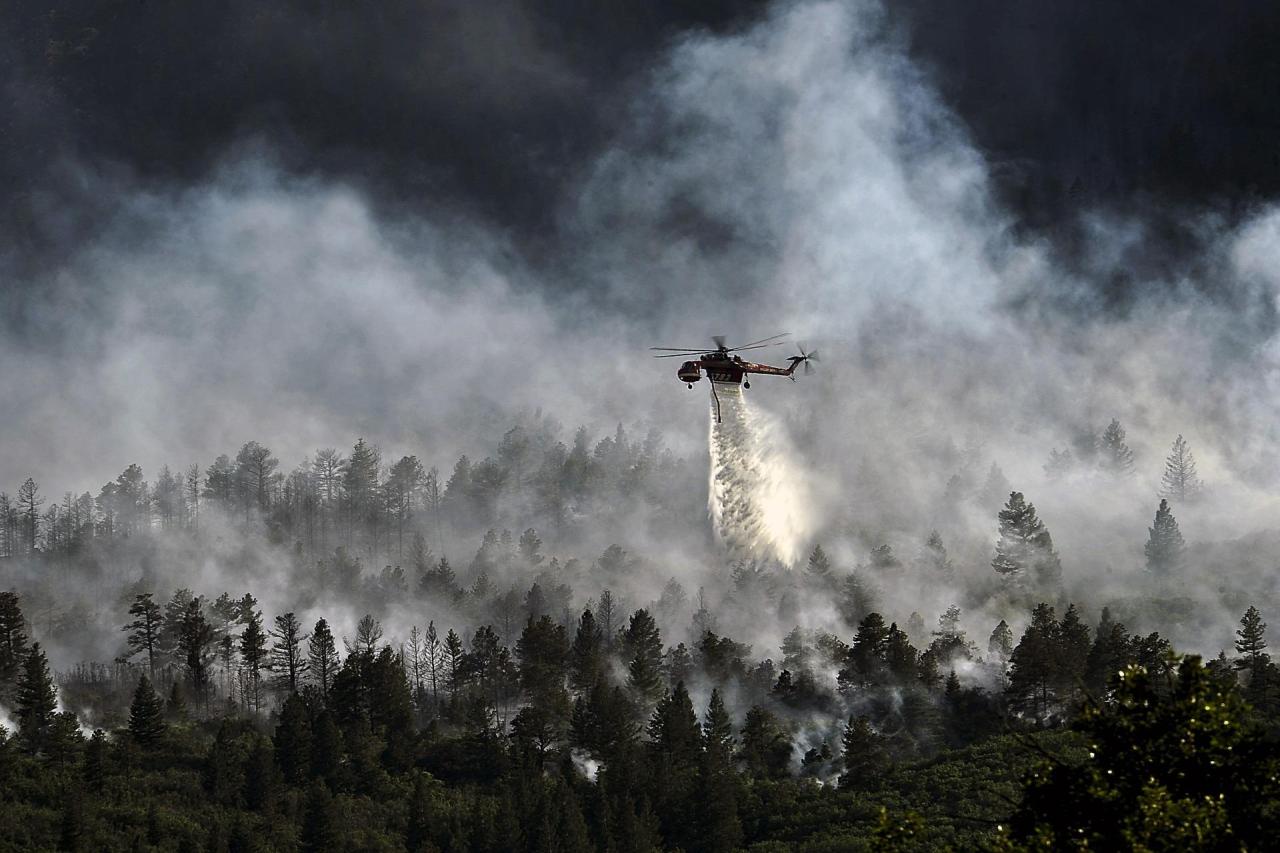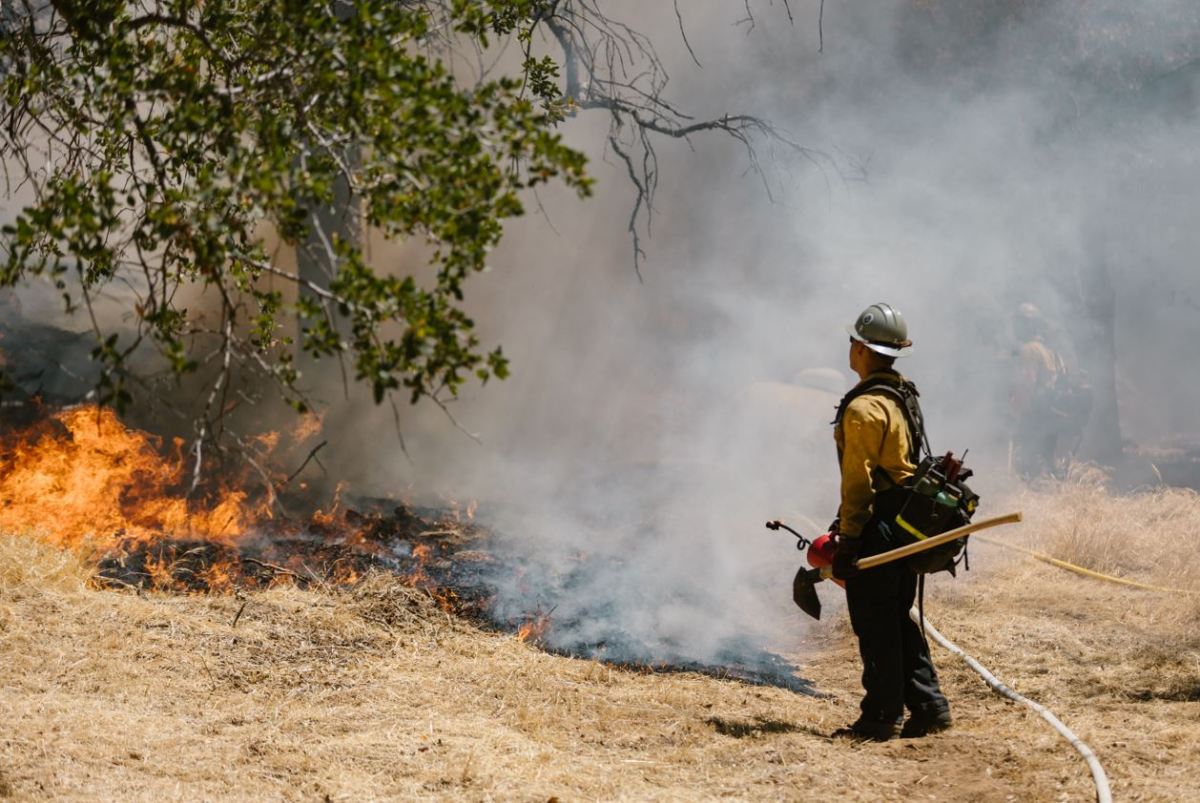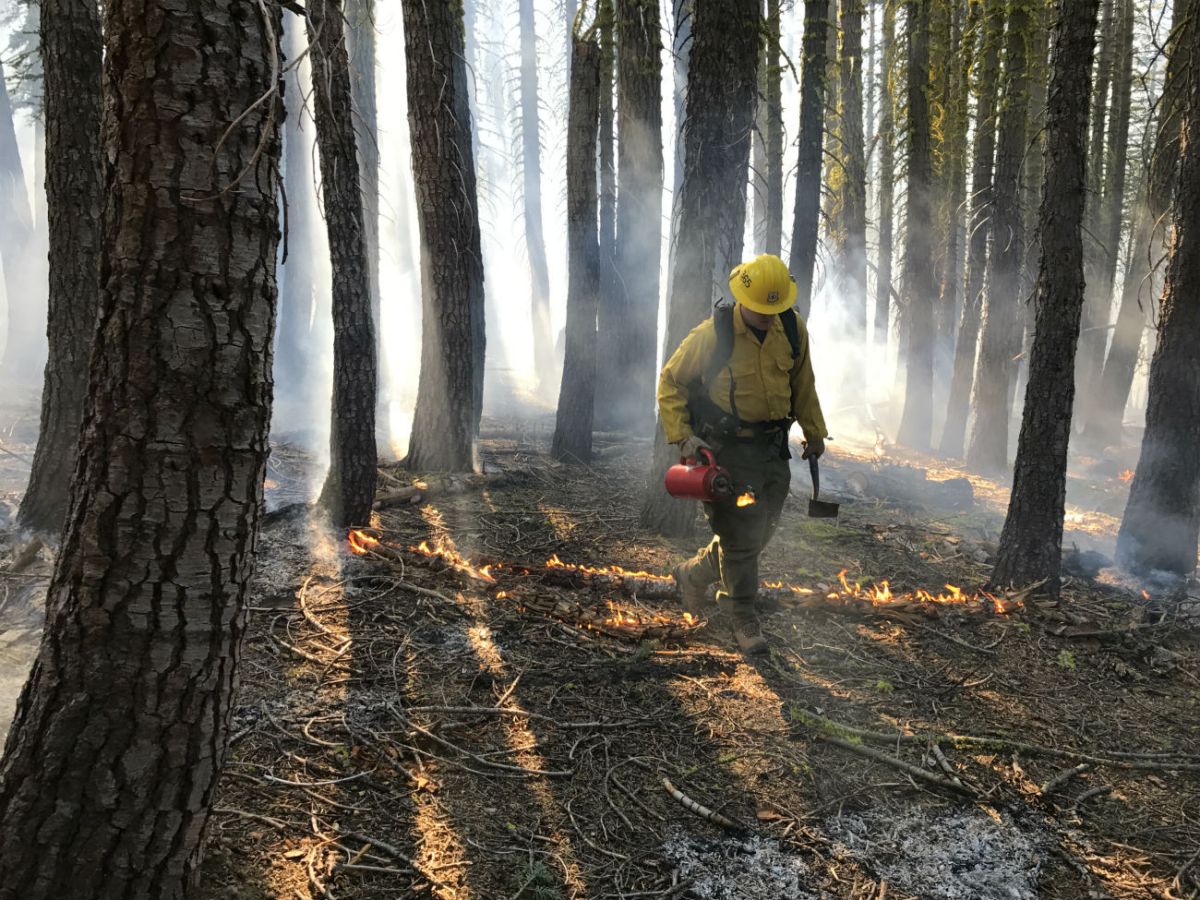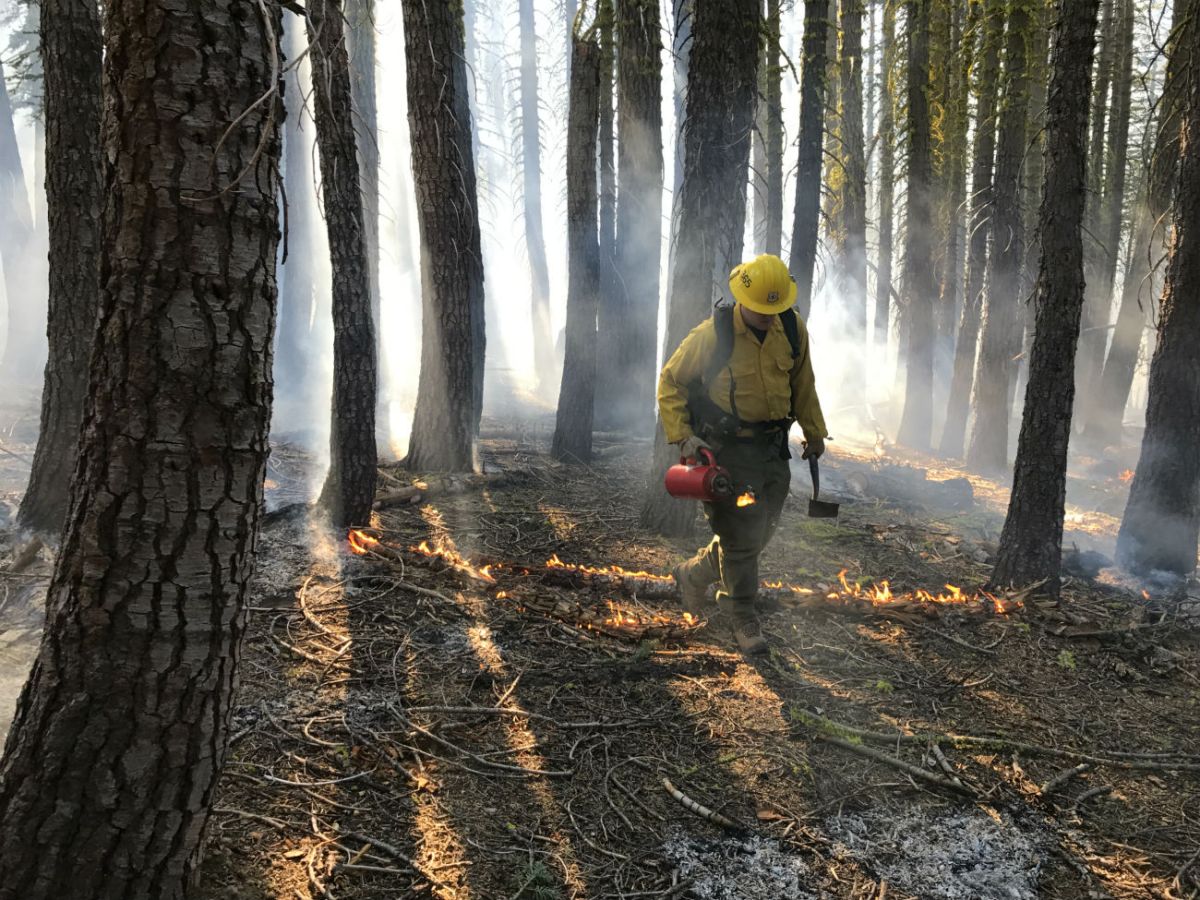Here’s how California has increased forest management and wildfire prevention is a story of adaptation and innovation. Facing increasingly devastating wildfire seasons, California has aggressively pursued a multi-pronged approach, from dramatically increasing forest thinning and fuel reduction programs to leveraging cutting-edge technology for early detection and response. This strategy isn’t just about fighting fires; it’s about proactively improving forest health and building more resilient communities.
This article dives into the specifics of California’s evolving strategy, examining the various methods used for fuel reduction, the technological advancements in forest health monitoring, the improved wildfire suppression techniques, and the crucial role of community engagement and policy changes. We’ll explore both successes and challenges, painting a picture of the ongoing effort to protect California’s forests and its people.
California’s Enhanced Forest Management and Wildfire Mitigation
California’s wildfire crisis demands proactive and comprehensive solutions. This article examines the significant strides the state has made in forest management and wildfire mitigation, focusing on key strategies implemented over the past decade. These efforts involve a multi-pronged approach encompassing fuel reduction, improved monitoring, enhanced suppression techniques, community engagement, and policy changes.
Increased Forest Thinning and Fuel Reduction Programs
California has significantly ramped up its forest thinning and fuel reduction programs to reduce the risk of catastrophic wildfires. These programs vary in their approach and geographic focus, adapting to the diverse landscapes across the state. The following table illustrates the acreage treated annually over the last decade, categorized by program type. Note that these figures are illustrative and may vary depending on the data source and specific program definitions.
| Year | Program Type | Acres Treated | Counties Involved |
|---|---|---|---|
| 2014 | Statewide Fuel Break Program | 50,000 | Multiple |
| 2015 | CAL FIRE Forest Health Program | 75,000 | Plumas, Butte, Shasta |
| 2016 | Statewide Fuel Break Program | 60,000 | Multiple |
| 2017 | CAL FIRE Forest Health Program | 80,000 | Siskiyou, Trinity, Humboldt |
| 2018 | Community Forest Protection Program | 40,000 | El Dorado, Amador, Calaveras |
| 2019 | Statewide Fuel Break Program | 90,000 | Multiple |
| 2020 | CAL FIRE Forest Health Program | 100,000 | Multiple |
| 2021 | Community Forest Protection Program | 55,000 | Multiple |
| 2022 | Statewide Fuel Break Program | 110,000 | Multiple |
| 2023 | CAL FIRE Forest Health Program | 120,000 | Multiple |
Several methods are employed for fuel reduction, each with its own advantages and disadvantages:
- Prescribed Burns: Controlled burns remove underbrush and smaller trees, mimicking natural fire cycles.
- Effectiveness: High, reduces fuel load effectively.
- Cost: Moderate, requires planning, monitoring, and personnel.
- Environmental Impact: Can be beneficial for ecosystem health, but requires careful management to minimize smoke impacts.
- Mechanical Thinning: Using machinery to remove trees and brush.
- Effectiveness: High, particularly effective in dense stands.
- Cost: High, requires specialized equipment and labor.
- Environmental Impact: Can cause soil compaction and habitat disruption if not carefully managed.
- Mastication: Using specialized machinery to shred vegetation.
- Effectiveness: Moderate, creates a less dense fuel bed.
- Cost: Moderate to high, depending on terrain and vegetation density.
- Environmental Impact: Can be less disruptive than mechanical thinning but may still affect wildlife habitat.
Challenges include accessing remote areas, navigating environmental regulations (like protecting endangered species), and addressing public concerns about smoke and potential impacts on air quality.
California’s tackling wildfires by boosting forest management, including controlled burns and thinning overgrown areas. Want a break from all that serious stuff? Check out this awesome giveaway: Three signed shirts up for grabs in bumper MyLFC giveaway. Back to fire prevention – these efforts aim to create healthier forests and reduce the risk of devastating blazes.
Improved Forest Health Monitoring and Early Detection Systems
Technological advancements have revolutionized forest health monitoring and wildfire detection. The integration of various technologies provides a comprehensive overview of forest conditions and facilitates early wildfire detection.
California’s tackling wildfires involves smarter forest management, like controlled burns and thinning out dense forests. It’s a complex issue, and sometimes you need a break from the news, so check out this unrelated story: Rodrigo Bentancur: Tottenham midfielder says ‘all good’ after. Getting back to California, improved forest health is key to preventing future devastating blazes.
| Technology | Advantages | Disadvantages | Cost |
|---|---|---|---|
| Satellite Imagery | Large-scale monitoring, identifies changes in vegetation, provides historical data | Can be affected by cloud cover, resolution limitations, high initial investment | High |
| Aerial Surveys | Detailed imagery, can assess fuel loads and identify potential fire hazards, relatively quick coverage | Weather dependent, expensive, requires skilled personnel | High to Moderate |
| Ground-based Sensors | Real-time data, accurate measurements of environmental conditions (temperature, humidity, etc.), relatively low cost per unit | Limited coverage area, requires maintenance and power supply, data needs to be aggregated | Moderate to Low |
Early detection systems include lookout towers, weather stations, and public reporting apps. Predictive modeling uses historical fire data, weather patterns, and fuel conditions to forecast wildfire risk, allowing for proactive resource allocation. For example, a model might predict a high risk of fire in a specific area due to dry conditions and high fuel loads, prompting preemptive fuel reduction efforts or strategic firefighter deployment.
Enhanced Wildfire Suppression and Response Strategies, Here’s how California has increased forest management and wildfire

Wildfire suppression strategies have evolved significantly. Before the emphasis on proactive forest management, suppression efforts often focused solely on fire containment after ignition. Now, a more integrated approach combines preemptive fuel reduction with improved suppression tactics.
Successful wildfire suppression efforts often involve a combination of strategies, such as creating firebreaks, using aerial tankers and helicopters for water drops, and employing ground crews for direct attack. Examples include the effective containment of the [insert example of a wildfire successfully suppressed, with details on tactics and outcomes].
Challenges for firefighters include diverse terrain (steep slopes, dense forests), unpredictable weather (strong winds, high temperatures), and varied fuel types (grasslands, chaparral, forests).
Community Engagement and Wildfire Prevention Education

Community engagement is crucial for reducing wildfire risk. This involves public awareness campaigns, defensible space programs (creating a buffer zone around homes to reduce the risk of fire spread), and community-based fuel reduction projects.
Successful programs often involve partnerships between government agencies, fire departments, and community organizations. For instance, [insert example of a successful community-based wildfire prevention program]. Effective communication is key to ensuring community preparedness and response. A sample infographic on creating a defensible space might include illustrations of removing flammable vegetation within 30 feet of a home, using fire-resistant landscaping, and regularly clearing debris.
Changes in Forest Management Policy and Legislation
Significant legislative changes have impacted forest management and wildfire prevention. These changes often involve increased funding for fuel reduction projects, strengthened regulations regarding building in wildfire-prone areas, and improved coordination among government agencies.
- [Insert example of a key legislative change, including date and brief description of its impact]
- [Insert another example of a key legislative change, including date and brief description of its impact]
- [Insert a third example of a key legislative change, including date and brief description of its impact]
These changes aim to improve forest health, reduce wildfire risk, and enhance the effectiveness of wildfire response. Government agencies like CAL FIRE and the US Forest Service play vital roles in overseeing these efforts.
Conclusive Thoughts: Here’s How California Has Increased Forest Management And Wildfire

California’s battle against wildfires is far from over, but the state’s commitment to proactive forest management and improved wildfire response is undeniably making a difference. By combining large-scale fuel reduction efforts with technological advancements and robust community engagement, California is building a more resilient future. The ongoing evolution of strategies, driven by lessons learned and technological progress, offers a beacon of hope for other fire-prone regions grappling with similar challenges.
The future will likely involve continued refinement of these approaches, a commitment to ongoing research, and an unwavering focus on community preparedness.
California’s tackling its wildfire problem by boosting forest management, focusing on things like controlled burns and thinning out dense forests. It’s a big undertaking, and honestly, sometimes you need a break from the intense news cycle – like when you hear about celebrity splits, for instance, like this one: Richard Hammond announces split from wife Mindy after an.
Anyway, back to California’s wildfire efforts; these changes are crucial for long-term fire prevention.
Common Queries
What are the biggest challenges in implementing forest thinning programs?
Challenges include accessing remote areas, navigating environmental regulations, securing funding, and addressing public concerns about the impacts of thinning methods.
How does predictive modeling help in wildfire prevention?
Predictive modeling analyzes various factors (weather, fuel conditions, topography) to identify high-risk areas, allowing for preemptive resource allocation and targeted fuel reduction efforts.
What role do community members play in wildfire prevention?
Communities play a vital role through creating defensible space around homes, participating in fuel reduction projects, and staying informed about wildfire safety measures.
What are some examples of successful community-based wildfire prevention programs?
Many successful programs focus on education, home hardening, and collaborative fuel reduction projects within neighborhoods and communities. Specific examples would require further research into individual programs.
